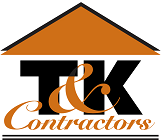Mold and moisture can wreak havoc on your home, turning an otherwise healthy environment into a toxic environment that can also wreak havoc on your body with many health issues such as allergic reactions and respiratory problems. Mold is fungi that grow in the form of multi-cellular filaments that love wet, dark places, including those throughout your home. While no room in your house is safe from growing mold spores, the most likely places mold growth can occur are in the bathroom, kitchen or basements.
According to the EPA, “Molds can be found almost anywhere; they can grow on virtually any organic substance, as long as moisture and oxygen are present. There are molds that can grow on wood, paper, carpet, foods, and insulation. When excessive moisture accumulates in buildings or on building materials, mold growth will often occur, particularly if the moisture problem remains undiscovered or unaddressed. It is impossible to eliminate all mold and mold spores in the indoor environment. However, mold growth can be controlled indoors by controlling moisture indoors.” (ref. http://www.epa.gov/mold/)
Preventing mold from growing in your home should be your first form of attack against these fast-growing fungi. Excessive moisture and indoor humidity is probably the biggest culprit to mold growth; signs of excess moisture include frost and ice on cold surfaces, a musty odor, fogged windows, sweating pipes, dripping, peeling and cracked paint. Decaying in your home’s structure can also indicate excessive moisture. These are sure signs action needs to be taken quickly.
Unfortunately, there is no practical way to eliminate all mold spores in the indoor environment, but the way to control indoor mold growth is to control moisture. Proper cleaning on a regular basis can also help keep mold at bay, but ensuring there is no excess moisture in the air can be the key to keeping mold from growing in the first place. You can easily reduce moisture with the following methods: venting bathrooms, clothes dryers, and other moisture-generating sources to the outside; using air conditioners and de-humidifiers; increasing ventilation; and using exhaust fans whenever cooking, dishwashing, and cleaning. Preventing excess moisture and mold can also be done by ensuring any potentially leaky areas are not already cracked and damaged; if it is damaged, fixing the leak within 24-48 hours will help slow the growth.
If mold is already a problem in your home, make sure to thoroughly clean the affected areas. Many products are available to help keep your home clean and free of mold, but you should still always remember the first rule: keep moisture at bay. To clean a moldy area, scrub the affected area with water and detergent or your cleaning product of choice. Once the area is thoroughly clean, dry it completely and fix any cracks or crevices that moisture can hide in.
For more information on mold and moisture in your home, read the EPA’s guide “A Brief Guide to Mold, Moisture and Your Home.”
